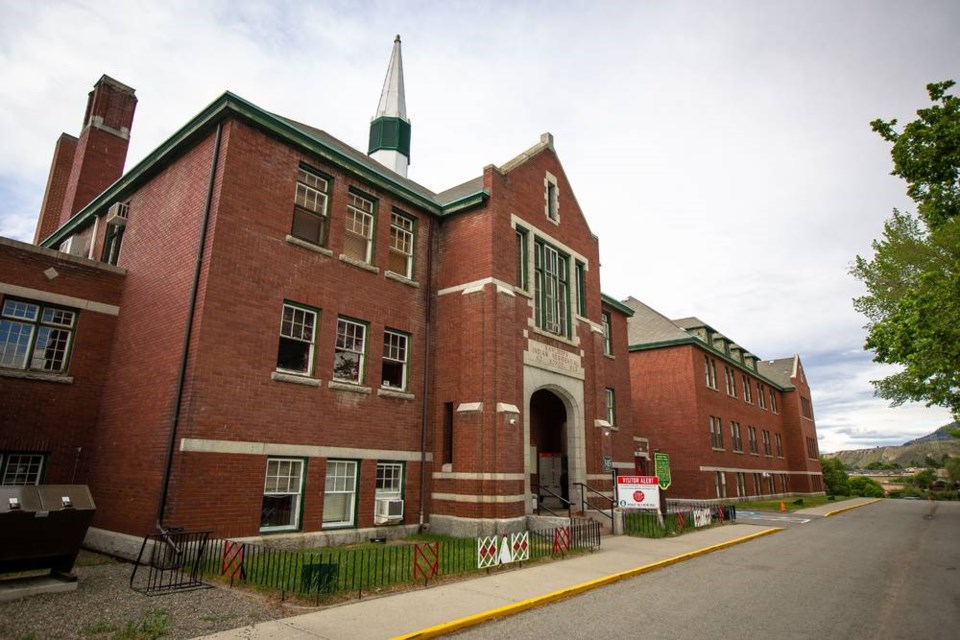The horror of the children’s graves discovered near a Kamloops residential school set me a memory to ponder.
In London in 2018, my partner and I visited Southwark Cathedral. After our tour, we stepped out to find a freeform monument of pink granite, surrounded by cobblestones and grass, with a sign nearby.
Reading this, I saw it was a memorial to the Mohegan sachem, Mahomet Weyonomon, who had traveled to London from the colony of Connecticut in 1736 to petition King George II for return of ancestral lands.
Mahomet died of smallpox shortly after his arrival. As he was a foreigner, he couldn’t be buried in the city of London, so was laid to rest in this churchyard. The monument, carved of Connecticut granite by Peter Randall-Page, was unveiled by Queen Elizabeth in November 2006.
It’s a beautiful monument. But what struck me was my connection to Mahomet.
My Connecticut ancestor Thomas Leffingwell (1624-1713), an inspiration for James Fenimore Cooper’s Deerslayer, had saved the life of his friend Uncas, Mohegan sachem and great-grandfather of Mahomet, in 1645.
On the minus side, a later ancestor, Benajah Bushnell, worked to undermine this same Mahomet’s efforts. As Mahomet crossed the Atlantic, hoping to find resolution, Bushnell was on his tribal lands, trying to cut the ground from under his feet.
We know history isn’t a world locked away in books; it’s made tangible by monuments, but especially by unseen, no less tangible energies of our own links to those people, spanning vast swathes of time and space — by bodies buried that we cannot yet see.
I spent time at Mahomet’s memorial, thinking of ancestors good, bad and those a little of both, wondering what I would have done had I been in my ancestors’ place, grieving over their part in so much suffering that felt as close to me as yesterday.
And I thought of advice I’d received a few years earlier from a cousin, my elder by many years. Octogenarian Rev. Dr. Samuel Berry McKinney (1926-2018) was a friend and colleague of the Rev. Dr Martin Luther King Jr. and himself a leading light of the civil-rights movement in the U.S.
McKinney’s daughter, Dr. Lora-Ellen McKinney, and I had found we shared DNA, through testing with 23andMe. Our shared genes traced back to the fact that my one of my white ancestors had sexually exploited one of McKinney’s enslaved ancestors.
I remember sitting with McKinney and, feeling the weight of this history, apologizing for what brought us together. McKinney put a hand on mine.
“The sins of your fathers are not yours to carry,” he said quietly but firmly. “Doing good is as much about work as it is prayer. Keep doing good work, and leave the ancestors to work out the destinies they made for themselves.”
By mourning the past, he seemed to say, I was in danger of doing nothing now and having no impact on the future, which we all, he implied, should want and work to be a better place.
McKinney wanted me to understand there was nothing we could do to “fix” the world that had made my ancestors exploiters of his. He had faith that a better future was achievable, if we directed our energies to that task, as governments and as individuals.
My first reaction, on reading about the children’s graves, was: “Didn’t they tell us about these hells they were consigned to? Did we listen?”
And despair, because they are dead and all effort to rescue them is too late. We should and must mourn, as I did at Mahomet Weyonomon’s grave in London.
By touching the stone, I brought the two men in my bloodline, one friend of the Mohegan and one foe, together in my hand, laid on the granite surface.
But that was for me; Mahomet is now dust.
What we can do for the children at Kamloops, for all the children like them and their families suffering now, is refuse to leave them nameless in the ground, to find and tell their stories, set them up to face the sun as we face them and say, children, we will never do this to you again.
We failed you then. We must not do so now.
Biographer and historian Grant Hayter-Menzies is author of the 2019 memoir The North Door: Echoes of Slavery in a New England Family, among other books published in Canada and abroad. He lives in Sidney.



